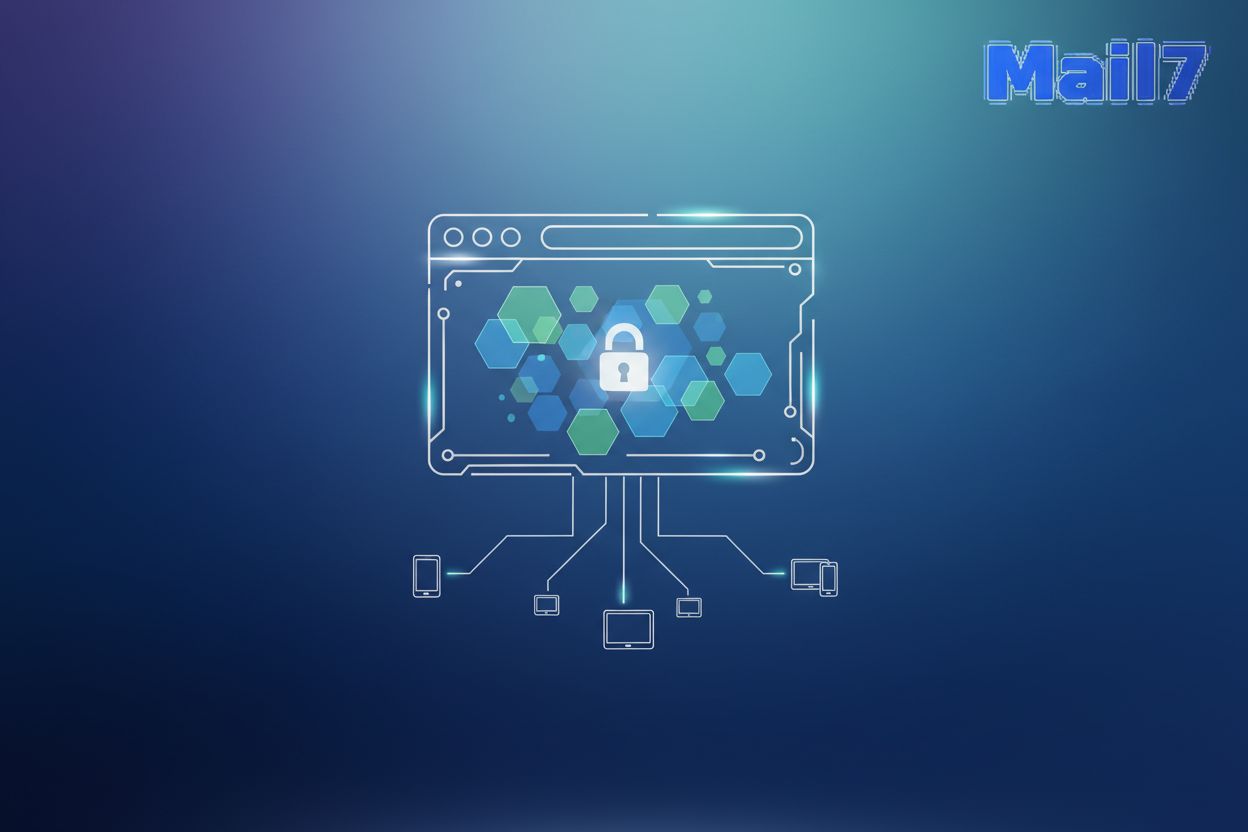How Disposable Email Addresses Impact Email Deliverability
TL;DR
Understanding Disposable Email Addresses: What Are They?
Ever wondered why you keep getting those weird emails from "totally legit" companies after signing up for, like, one thing? Yeah, disposable email addresses (deas) might be the culprit. Let's dive in; they're not as shady as you might think... or maybe they are.
Disposable email addresses are basically temporary email accounts. Think of em' like burner phones, but for your inbox.
These addresses go by a few names: temp emails, throwaway emails, or burner emails. (Temp Mail - Disposable Temporary Email) They all serve the same purpose; it helps you avoid spam and protect your privacy. You know, for those times when you really need that free e-book but don't want a lifetime supply of marketing emails.
People use them for all sorts of stuff. Signing up for a free trial, posting on a forum, or dodging spam. (Users Abusing Free SaaS Trials with Multiple Emails. Thoughts?) It's like wearing an incognito mask online.
You might think they're just for avoiding dodgy websites, but even Apple offers a version with their "Hide My Email" feature. (How to use Hide My Email with Sign in with Apple) It shows it's not always about hiding something bad, but more about control.
Now, you might ask, what are the different types of them?
Not all deas are created equal. Some are more hardcore than others.
Throwaway accounts are the ninjas of the dea world. They're designed for very short-term use, often for a single sign-up or transaction, and then they're typically deactivated or become inactive. They don't exactly "self-destruct" in a dramatic fashion, but their lifespan is intentionally limited. For example, you might use one to sign up for a one-time discount code.
Forwarding accounts redirect emails to your real inbox, but with a twist. You can often set up rules for these, so emails from specific forwarding addresses go to different folders in your primary inbox. It's like having a secret agent screening your mail before it gets to you. This is great for tracking which services might be selling your data, as you can see which forwarding address starts receiving unwanted mail.
Alias accounts are similar to forwarding accounts but often operate within a single service. They allow you to create multiple email addresses that all point to one main inbox, but you can assign them to different purposes. For instance, you might have one alias for online shopping, another for newsletters, and a third for social media. This helps you organize your inbox and identify sources of spam.
Then there's Apple's "Private Relay," which is part of iCloud+. When you use "Hide My Email," it creates a unique, random email address that forwards to your real inbox. "Private Relay" takes this a step further by also masking your IP address and encrypting your internet traffic when browsing in Safari. So, while "Hide My Email" specifically masks your email address for app and website sign-ups, "Private Relay" is a broader privacy feature that includes email masking as one component.
So, what's the next step? Well, now we gotta look at who's providing these things.
These services are all over the internet, and some are easier to use than others. Choosing the right one depends on your needs.
For quick, no-fuss use: Services like Mailinator, 10MinuteMail, TempMail, Guerrilla Mail, and YOPmail are super easy to create. You don't need any personal info, and they often have short lifespans or are publicly accessible, making them ideal for one-off sign-ups where you just need to receive a confirmation email and don't care about long-term access.
For more control and privacy: Burner email services like 33Mail and Blur offer more advanced features. These might include custom domains, forwarding options to your real inbox with filtering capabilities, and better management of your temporary addresses. They're a good choice if you plan to use disposable emails more regularly or need to maintain a higher level of privacy and organization.
These are just a few examples, and new ones pop up all the time. The constant emergence and evolution of these services can pose challenges for email marketers trying to maintain clean lists and reach their audience effectively.
So, now that we know what disposable emails are and who provides them, let's see how they can mess with email deliverability.
The Impact on Email Deliverability: Why You Should Care
Okay, so you're sending out these killer email campaigns, right? But what if a bunch of those emails are going nowhere? Like, literally nowhere? That's where disposable email addresses come in and mess everything up.
It's easy to think, "eh, a few bad emails, no biggie." But it is a biggie, trust me. Here's why:
Screwed-Up Stats: Think your open rates are awesome? What if, actually, half those "opens" are from bots or dead deas? It's like throwing a party and only robots show up - Salesforge points out how bounce rates, open rates, and click-through rates all take a hit. You're not getting a real picture of how your campaigns are doing. Disposable emails can inflate bounce rates because many of these addresses are temporary and quickly become inactive. Open rates can be skewed by automated systems that check for new emails rather than genuine user interaction. Click-through rates can suffer because users of disposable emails might not be as invested in the content, or they might be using them for a single purpose and never engage further.
Sender Reputation in the Toilet: Email providers, like Gmail and Outlook, are always watching. They're checking if people are engaging with your emails or marking them as spam. A bunch of bounces and low engagement? They start to think you're a spammer, and next thing you know, bam, you're in the junk folder.
Blacklists are a Nightmare: And believe me, you do not want to end up on a blacklist. It is really hard to get off of it, and it can kill your email marketing efforts for weeks, or even months.
Think of it this way: A real email is like a loyal customer, and a disposable one is like a drive-by window shopper.
This diagram illustrates the fundamental difference in how email providers perceive and treat emails from personal versus disposable addresses, directly impacting deliverability metrics.
See the difference? It's huge.
So, what's next? We need to figure out how to spot these sneaky disposable emails and kick 'em to the curb.
Identifying and Blocking Disposable Email Addresses: A Developer's Toolkit
Okay, so you're ready to start blocking those pesky disposable email addresses? Good! It's like setting up a digital bouncer for your email list - only way less confrontational.
So, how do we spot these temp emails before they wreak havoc? Email verification apis are your first line of defense. These services use extensive databases and sophisticated algorithms to analyze email addresses in real-time. They can tell you not just if an email is from a known disposable domain, but also if the inbox actually exists, if the domain is active, and even if the email address is associated with fraudulent activity. They're like having a detective that can spot a fake id.
Services like zerobounce, hunter.io, and neverbounce all offer real-time detection. They keep updated lists of known disposable email domains that is very useful for, you know, not getting screwed over.
These apis check if an email address is from a disposable domain. It also verify if the inbox actually exists; is it a typo, or is the domain active?
Integrate these apis into signup forms, email validation processes, and even your crm. For example, a healthcare provider could use it to make sure patient emails are legit before sending sensitive info.
You can also take matters into your own hands. Creating and maintaining your own blacklist of known disposable email domains is a good start. Think of it like a "wall of shame" for email addresses.
The big challenge is that new services pop up all the time, so it needs constant updating. Imagine a retail company constantly updating its list to block fake contest entries–it's a never-ending game.
Regular expressions (regex) is your friend here. Regex is a sequence of characters that forms a search pattern. In this context, it's used to identify patterns commonly found in disposable email addresses. For example, you might use regex to flag addresses with unusually long strings of random characters, or those that contain specific keywords often associated with temporary email services.
Here are a few common regex patterns that can help identify disposable emails:
^[a-zA-Z0-9._%+-]+@(mailinator\.com|temp-mail\.org|guerrillamail\.com)$- This pattern specifically targets known disposable email domains.^[a-zA-Z0-9._%+-]{1,30}@[a-zA-Z0-9.-]+\.[a-zA-Z]{2,}$- While this is a general email pattern, you can modify it to look for unusually short or long usernames, or domains that don't follow typical structures. For instance, you might add a length constraint to the username part.
This diagram shows how regular expressions can be used as a filter to identify and block potentially disposable email addresses.
It ain't perfect, but it helps.
Blocking disposable emails is a crucial step, but it's just one part of a larger strategy to ensure your emails reach their intended recipients.
Best Practices for Improving Email Deliverability
Email deliverability, it's like trying to bake a cake but half the ingredients are missing, right? You can follow all the steps, but something's just off. So, how do you make sure your emails actually, y'know, arrive?
First thing is first: list hygiene is your friend. Think of it like decluttering your digital space.
Regularly prune those hard bounces, unresponsive subscribers, and flagged addresses. Honestly, doing this monthly can seriously boost your deliverability. Imagine a small business owner who cleans their email list every month – suddenly, their marketing emails are hitting customer inboxes instead of getting lost in spam.
Authentication is also key. spf, dkim, and dmarc are like digital signatures that verify your emails, telling email providers, "Hey, I'm legit!". Without them, it is like sending a letter without a return address; it probably ain't arriving.
- SPF (Sender Policy Framework): This is a DNS record that specifies which mail servers are authorized to send email on behalf of your domain. It helps prevent spoofing by telling receiving servers to reject mail from unauthorized sources.
- DKIM (DomainKeys Identified Mail): This adds a digital signature to your outgoing emails. When a recipient's server receives your email, it can use your public DKIM key to verify that the email hasn't been tampered with in transit and that it genuinely came from your domain.
- DMARC (Domain-based Message Authentication, Reporting & Conformance): This builds on SPF and DKIM. It tells receiving servers what to do if an email fails SPF or DKIM checks (e.g., quarantine or reject it) and provides reporting on email authentication activity.
What you put in your emails counts, too. Nobody likes spammy language, excessive caps, or walls of images with no text.
Make sure you have a clear unsubscribe link. It's just good manners, really. Also, personalized subject lines can do wonders for catching people's attention; it adds a human touch. For example, instead of "Our Latest Newsletter," try "John, Here's Your Weekly Update on [Topic of Interest]." This makes the recipient feel directly addressed and more likely to open the email.
Critically, keep an eye on those engagement metrics. Open rates, click-through rates, spam complaints – they're all clues. Set up alerts for sudden drops in engagement; it is like a warning sign that something's amiss.
This diagram visually represents the contrasting engagement and deliverability outcomes between personal and disposable email addresses.
Tuning into these metrics can help you tweak your strategy before things gets outta control.
So, what's next? Let's talk about the tools that can help you automate this whole process.
Leveraging Email Testing and Verification Tools
Okay, so you're fighting a losing battle? Nah, not if you use the right email testing and verification tools. These tools are essential for maintaining a healthy email list and ensuring your messages actually get delivered.
Email Verification APIs: These are services you can integrate directly into your signup forms or backend systems. They check email addresses in real-time as they're submitted. This is your first line of defense, catching invalid, risky, or disposable email addresses before they ever hit your database. They can identify temporary emails, role-based emails (like info@ or support@), and even detect syntax errors or non-existent domains.
Email Testing Platforms: These platforms go beyond simple verification. They allow you to test your email campaigns before sending them to your entire list. This includes checking for rendering issues across different email clients (like Gmail, Outlook, Apple Mail), ensuring your links are working correctly, and even simulating how your email might be perceived by spam filters. Some platforms also offer list cleaning services, where they analyze your existing list for invalid or inactive addresses.
Choosing the Right Tools: When picking tools, consider a few key factors. Accuracy is paramount – you want a service that reliably identifies problematic emails. Features are also important; do you need real-time API checks, bulk list cleaning, or advanced spam testing? Finally, price matters, but don't let it be the sole deciding factor. A slightly more expensive tool that provides better accuracy and features can save you a lot of money and headaches in the long run by protecting your sender reputation. Many of these tools offer automation capabilities, allowing you to schedule regular list cleanings or integrate verification seamlessly into your existing workflows, making the entire process much more efficient.






